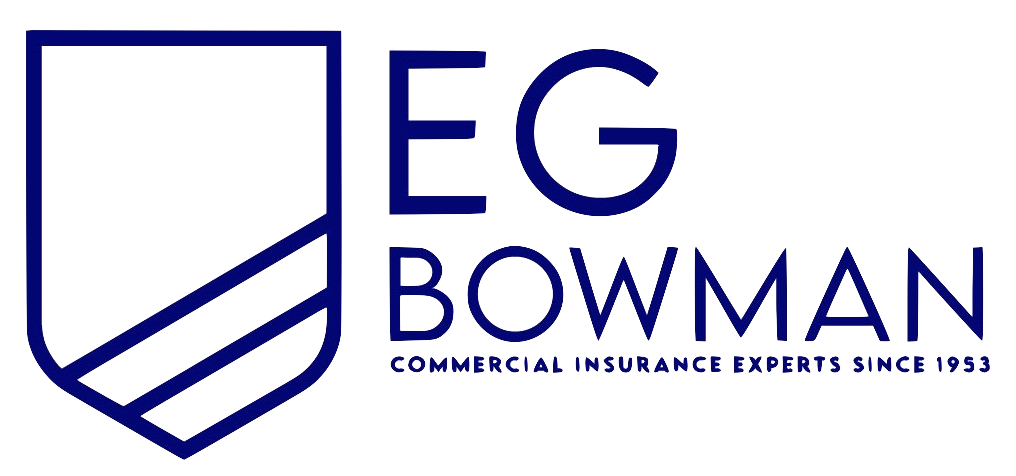
Most Common Business Policies
Index
Contact Us
Municipality insurance is a vital aspect of risk management for local governments and public entities in New York. This type of insurance is designed to protect municipalities against various liabilities that can arise from their operations. In a bustling metropolis like New York, understanding municipality insurance is essential for ensuring the safety and well-being of its citizens.
Understanding the Basics of Municipality Insurance
Municipality insurance encompasses a broad array of coverage options specifically tailored for public entities, including towns, cities, and counties. Such insurance aims to safeguard these organizations from potential financial losses due to claims or lawsuits stemming from their duties and responsibilities.
What is Municipality Insurance?
Municipality insurance is a specialized form of liability insurance that provides coverage for local government entities. It typically covers property damage, personal injury claims, legal defense costs, and other risks that municipalities might face in their daily operations. This type of insurance is crucial for any local government looking to protect its assets and budget. In addition to basic liability coverage, many policies also include provisions for specialized areas such as public officials' errors and omissions, which can protect against claims related to decisions made by elected or appointed officials. This ensures that the individuals responsible for governance can operate without the constant fear of personal financial repercussions.
Why is Municipality Insurance Important?
The importance of municipality insurance cannot be overstated. It acts as a safety net for local governments, which can be exposed to significant financial liabilities. Without adequate insurance coverage, municipalities may struggle to cope with the financial implications of unforeseen events, legal actions, or public service failures. This ultimately affects their ability to serve their communities effectively. Furthermore, the complexity of municipal operations often leads to unique risks, such as those arising from public events, infrastructure failures, or environmental hazards. By having comprehensive insurance coverage, municipalities can ensure that they are not only prepared for these risks but also able to recover swiftly, maintaining the trust and safety of their constituents. Additionally, many municipalities are required by law to carry certain types of insurance, which makes understanding and obtaining the right coverage even more critical for compliance and operational continuity.

The Scope of Municipality Insurance in New York
New York municipalities face unique challenges and risks due to their diverse populations and extensive public services. Understanding the scope of municipality insurance within this context is crucial for effective risk management. With a population that includes a mix of urban, suburban, and rural communities, municipalities must navigate a complex landscape of regulatory requirements, public expectations, and potential liabilities that can arise from their operations.
Types of Coverage Available
Various types of coverage are available under municipality insurance, including:
- General Liability Insurance: Covers bodily injury and property damage claims against the municipality.
- Property Insurance: Protects physical assets such as buildings, vehicles, and equipment.
- Professional Liability Insurance: Covers claims arising from professional services rendered by municipal employees.
- Workers' Compensation Insurance: Provides benefits to employees injured on the job.
Each of these coverage types is essential to mitigate the unique risks that municipalities face in New York. For instance, general liability insurance is particularly vital in urban areas where the likelihood of accidents and injuries is heightened due to higher foot traffic and public gatherings. Additionally, property insurance safeguards against the financial impact of natural disasters, which can be a significant concern for municipalities located in areas prone to flooding or severe weather events.
Key Features of New York Municipality Insurance
Municipality insurance in New York offers several key features that enhance its effectiveness:
- Comprehensive Coverage: Policies are designed to cover a wide range of potential liabilities.
- Tailored Plans: Coverage can often be customized to suit the specific needs of different municipalities.
- Risk Management Services: Many insurers provide advisory services to help municipalities identify and mitigate risks.
These features not only provide protection but also support the operational efficiency of the municipality. For example, the availability of risk management services allows municipalities to proactively address potential hazards, which can lead to a reduction in claims and lower insurance premiums over time. Furthermore, tailored plans ensure that smaller municipalities, which may have different needs compared to larger urban centers, receive appropriate coverage that reflects their unique operational realities. This adaptability is crucial in a state as diverse as New York, where the needs of a rural town can vastly differ from those of a bustling city.
The Process of Acquiring Municipality Insurance in New York
Securing municipality insurance in New York involves a clear and structured process, designed to ensure that local governments receive the coverage that best meets their needs.
Eligibility Criteria for Municipality Insurance
To qualify for municipality insurance, entities typically must meet certain eligibility criteria. These may include:
- Being officially recognized as a municipality by the state.
- Demonstrating a track record of effective risk management practices.
- Providing accurate documentation of assets and services provided.
Meeting these criteria allows municipalities to access insurance products tailored to their specific requirements. Additionally, municipalities may benefit from participating in community risk assessments, which can further enhance their eligibility. These assessments not only identify potential risks but also provide actionable insights that can improve safety protocols and reduce liability, ultimately making municipalities more attractive to insurers.
Steps to Apply for Municipality Insurance
The application process for municipality insurance is generally straightforward, and it includes the following steps:
- Assess the municipality's insurance needs based on its operations and exposure to risk.
- Gather necessary documentation, including asset lists and previous insurance policies.
- Contact multiple insurance providers to obtain quotes and coverage options.
- Review and compare quotations, taking into consideration coverage limits and exclusions.
- Select a provider and finalize the policy terms before signing the agreement.
Following these steps can help ensure a smooth acquisition of the necessary insurance coverage. Furthermore, municipalities should consider engaging with a broker who specializes in public sector insurance. A knowledgeable broker can provide invaluable guidance throughout the process, helping to navigate the complexities of insurance policies and ensuring that municipalities secure the most favorable terms. They can also assist in understanding the nuances of coverage options, such as liability limits and endorsements, which are crucial in protecting public assets and services.
Cost and Financing of Municipality Insurance
Understanding the cost and financing options associated with municipality insurance is crucial for budget-conscious local governments. As municipalities face increasing demands for services and infrastructure, the need for effective risk management through insurance becomes even more pressing. By carefully evaluating their insurance needs and options, local governments can ensure they are adequately protected while also maintaining fiscal responsibility.
Factors Influencing the Cost of Municipality Insurance
The cost of municipality insurance in New York can vary based on several factors, including:
- Size of the Municipality: Larger municipalities may face higher premiums due to increased risk exposure. The sheer volume of assets and public services, from parks to public transportation, can significantly impact the overall insurance cost.
- Claims History: A municipality with a history of frequent claims may see higher rates. Insurers often analyze past claims data to assess risk, meaning municipalities that have experienced significant losses may be viewed as higher risk.
- Type of Coverage Chosen: More comprehensive policies generally come with higher costs. Municipalities must weigh the benefits of extensive coverage against their budgetary constraints, often leading to difficult decisions about what risks to insure against.
Understanding these factors can aid municipalities in budgeting and exploring ways to mitigate insurance costs. Additionally, municipalities can benefit from conducting regular risk assessments to identify potential vulnerabilities and adjust their coverage accordingly. By proactively managing risks, they may be able to lower their premiums over time.
Financing Options for Municipality Insurance
Many municipalities seek financing options to help manage insurance costs. Some common strategies include:
- Pay-as-you-go Plans: Spreading premiums over a fiscal year can alleviate upfront costs. This approach allows municipalities to allocate their budgets more flexibly, ensuring that they can meet other essential financial obligations without compromising on insurance coverage.
- Insurance Pooling: Joining a municipal insurance pooling program can provide group rates for several municipalities. This collective bargaining power can lead to significant savings, as risks are shared among participants, often resulting in lower individual premiums.
- Local Government Grants: Utilizing state or federal grants designated for municipal risk management. These funds can be instrumental in covering insurance costs or enhancing safety measures that may reduce overall risk, ultimately leading to lower premiums.
These options help municipalities effectively manage their insurance expenditures. Furthermore, municipalities can explore innovative financing solutions, such as establishing dedicated reserve funds for insurance claims or utilizing risk management consultants to identify cost-saving opportunities. By taking a proactive approach to insurance financing, local governments can better navigate the complexities of municipal insurance while ensuring they remain financially stable and prepared for unforeseen events.

Legal Aspects of Municipality Insurance in New York
The legal framework surrounding municipality insurance is essential for understanding the rights and responsibilities of public entities and their insurers. This framework not only outlines the basic requirements for obtaining and maintaining insurance but also sets the stage for the resolution of disputes that may arise between municipalities and their insurers. Given the unique nature of public entities, the nuances of these legal aspects are critical for ensuring that municipalities are adequately protected against various risks.
Regulatory Bodies and Their Roles
Several regulatory bodies oversee municipality insurance, ensuring compliance with state laws. These include:
- New York Department of Financial Services: Regulates insurance providers and ensures fair practices.
- State Comptroller's Office: Oversees financial practices within municipalities and ensures proper use of funds.
These entities work together to maintain the integrity and effectiveness of municipality insurance in New York. Additionally, the New York State Insurance Fund plays a vital role by providing workers' compensation and disability benefits to public employees, further enhancing the safety net for municipalities. The collaboration among these bodies fosters a regulatory environment that prioritizes transparency and accountability, which is essential for public trust.
Legal Obligations and Rights of the Insured
Municipalities have specific legal obligations under their insurance policies, such as:
- Paying premiums on time to maintain coverage.
- Reporting claims promptly to the insurance provider.
Understanding these obligations is crucial to avoid lapses in coverage. Additionally, municipalities have rights, such as:
- Receiving clear communication from their insurers regarding coverage and claims.
- Accessing legal representation in the event of a dispute.
Awareness of these legal aspects helps municipalities navigate the complexities of insurance effectively. Furthermore, municipalities are entitled to engage in regular reviews of their insurance policies to ensure that they reflect current risks and needs. This proactive approach not only safeguards their interests but also empowers them to negotiate better terms with insurers, especially in light of evolving legal standards and emerging risks such as cyber threats and climate change impacts.
Future Trends in Municipality Insurance
The municipality insurance landscape is continually evolving due to various social, economic, and technological factors.
Impact of Technological Advancements on Municipality Insurance
As technology advances, it brings transformative changes to municipality insurance. Innovations such as data analytics and artificial intelligence can enhance risk assessment and management. Many insurers are beginning to employ predictive analytics to evaluate risks more accurately, which can potentially lead to more tailored coverage options and lower premiums for municipalities. Furthermore, the integration of Internet of Things (IoT) devices allows municipalities to gather real-time data on infrastructure and public safety, enabling insurers to create more dynamic policies that reflect current conditions and risks.
Predicted Changes in Municipality Insurance Policies
Looking forward, changes such as increased scrutiny on policies and emerging risks are predicted. New types of coverage may emerge in response to societal shifts such as environmental concerns and the growing impact of technology on municipal operations. Additionally, as insurance companies adapt to these changes, municipalities may find themselves in an evolving marketplace that offers new solutions and coverage opportunities. For instance, as climate change continues to pose threats, municipalities might seek specialized coverage for natural disasters, including floods and wildfires, which could lead to the development of more comprehensive disaster recovery policies tailored to specific geographic risks.
Moreover, the rise of cyber threats presents a unique challenge for municipalities, necessitating the inclusion of cyber liability insurance in their policies. As local governments increasingly rely on digital infrastructure for operations and public services, the potential for data breaches and cyberattacks grows. Insurers may need to collaborate with municipalities to develop robust cybersecurity measures, ensuring that they not only provide coverage but also help mitigate risks through proactive strategies and training programs for municipal staff.
